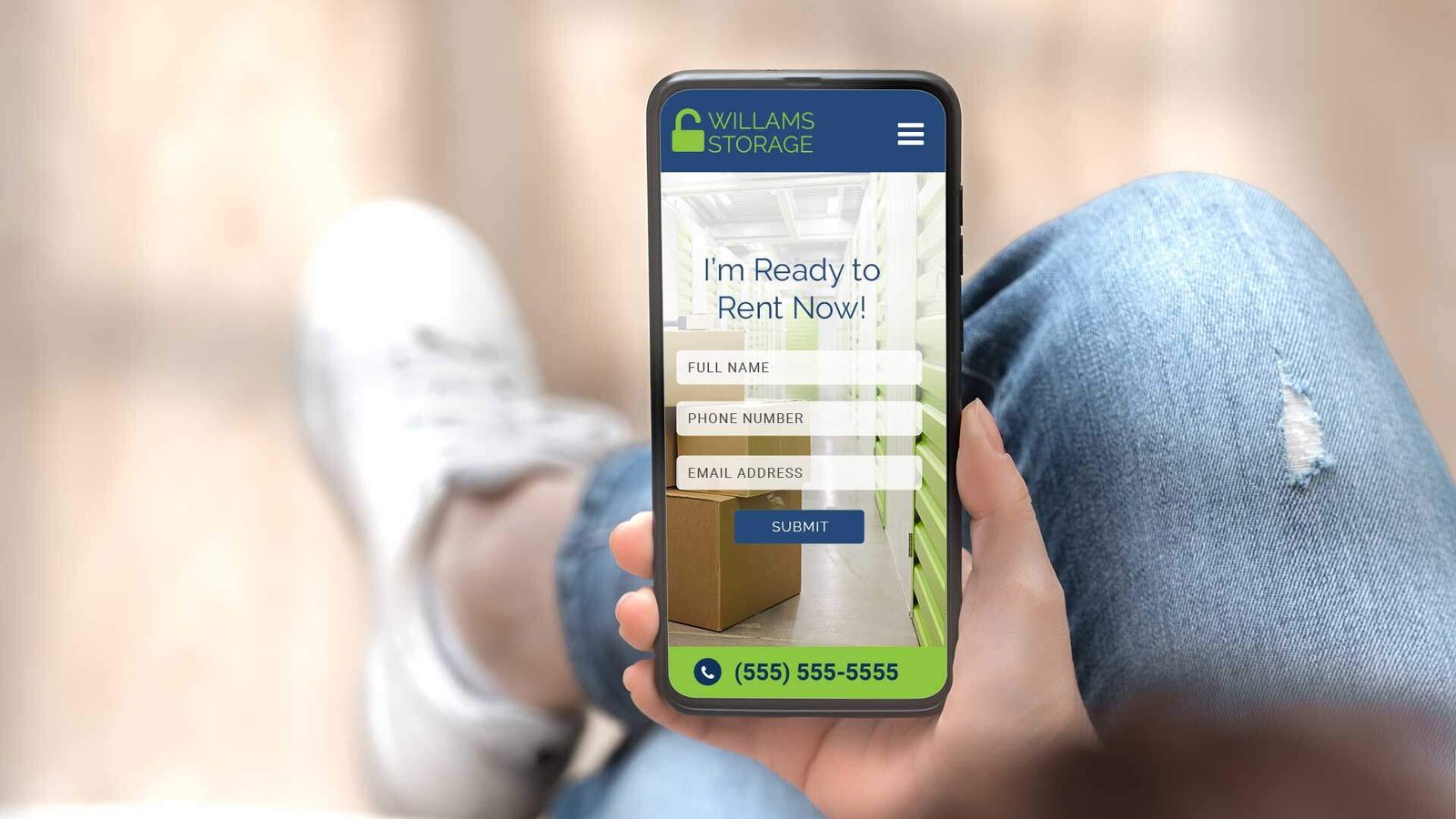A well-built website can be the difference between someone converting from a prospect to a renter in your self-storage facility. Your self-storage website is the storefront that will leave the first impression for many of your potential customers. Your self-storage website design must be professional, easy to use, and truly represent your business that encourages someone to inquire and not need to look anywhere else. Additionally, a great website opens up new opportunities for other marketing avenues like self-storage SEO strategies or pay-per-click campaigns.
Here are six tips to help create a unique website for your self-storage facility!
1. Captivating Design
Your user experience is an essential part of your website that will either capture or deter any of the online traffic you gain. Focusing on creating a website that flows and has an appealing aesthetic is a core component of creating a captivating self-storage website design. This website will be the face of your business, so you want to aim at making it memorable and easy to use.
People are hard to impress today, so if users need help navigating the site, they will find a self-storage solution elsewhere. It’s not often you get more than one opportunity to impress a potential customer on the internet; they’ll typically visit your site one time and never again if they’re not instantly hooked. Additionally, many people navigate the internet on their mobile devices, so ensuring the site is mobile-friendly is of the utmost importance.
2. Answer Your Customers’ Questions
Your self-storage website needs to contain the essential information your customer needs to make a decision. Due to the plethora of information and local competition, prospects will just look elsewhere if they can’t get the necessary answers.
By presenting all the necessary information upfront, you convey a sense of honesty and instantly start building trust with your customer. Additionally, by offering information on the website, you will save yourself from the same repeating phone calls of customers asking the same questions.
The information you should include involves the following:
- Details about your facility
- Types of storage you offer (drive-up, climate-controlled, boat & RV storage, wine storage, etc.)
- Rental unit sizing
- Sizing guides
- Current Specials
- Frequently Asked Questions
- Contact information
- Optional: Pricing and unit availability
It’s also highly recommended to include other information that others may not consider when looking for a self-storage facility.
3. Allow Multiple Ways to Contact You
It’s hard to keep up with all the different forms of communication in today’s world, but you must try if you want a thriving business. Some people prefer to communicate over other mediums you can enable throughout your website. Nothing will hurt your business worse than a customer having a hard time finding a way to contact you or the company. You’ll want to make sure there’s always a contact button or form nearby on every page in addition to contact information like phone number, email, or even texting.
Another area to consider is communications offsite through different avenues like social media and ensuring all your links are connected and working correctly on the website. Give customers multiple ways to contact you if they want to ask more questions or reserve a unit without delay.
4. Include Customer Reviews
Everyone on the internet is skeptical until proven otherwise. One of the best ways to build trust with prospective customers is by including reviews from current or prior customers. These reviews act as social proof to prospects, giving them more assurance that your self-storage facility can follow through on your promise and deliver the experience needed.
There’s no better way to know if something is worth the time and money than by hearing the experiences of others. On your website, it’s best to highlight the best reviews and the dates to ensure they’re relevant for future customers. You can also include links to other sites where you have reviews, like Google, so your prospects can read the “unfiltered” reviews.
5. Have a Blog
Blogs are a great way to provide your audience with helpful information about your facility or industry-specific advice. Introducing a blog onto your website will help build a sense of authority which will help bridge your customer’s trust in your facility. A blog can also allow your audience to stay updated on the latest information about your facility, critical details about marketing initiatives, or general advice that will make their lives easier.
A blog will improve your self-storage website’s search engine optimization, or SEO, rankings. You can include commonly used keywords or keyphrases that your customers will likely use and create relevant and helpful information around those keywords that will appear in their search results pages. Though not many people seek a self-storage blog, having the information available is useful when needed.
6. Keyword Research
Finally, an essential tip that you must incorporate into your website for the best results is conducting keyword research. Self-storage SEO is a significant contributor to successfully marketing your business online. SEO aims to get your self-storage website ranking at the top of search result pages by having relevant, high-quality information that your audience needs or maybe doesn’t realize benefits them.
The best way to approach self-storage SEO is by performing keyword research for commonly used and high-ranking words or phrases your audience will likely use. Once you know which words and phrases to use, you can organically implement them onto your website and watch the rankings rise! Self-storage facilities are location-based, so you’ll want to ensure your keywords are focused on local terms, like the name of your facility’s location. Additionally, you’ll want to check on your competitors, see what they’re using, and recheck your keyword research frequently since search patterns tend to change.
Wrapping it Up
Creating an easy-to-use, aesthetically pleasing website and a high performer is challenging and requires ongoing work. You will be spread thin between running your business and maintaining your digital storefront or website. The best self-storage website designers in the industry can be found all-in-one at Green Tulip Design. If you need help building or redesigning your self-storage, boat & RV storage, or specialty storage facility website, we can help.
Contact us today to get started on your self-storage website or redesign your current site!



